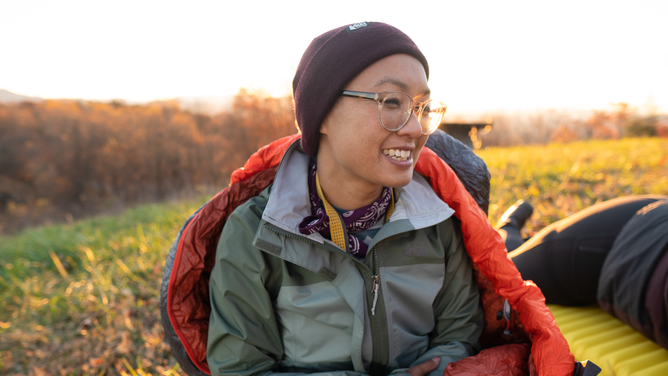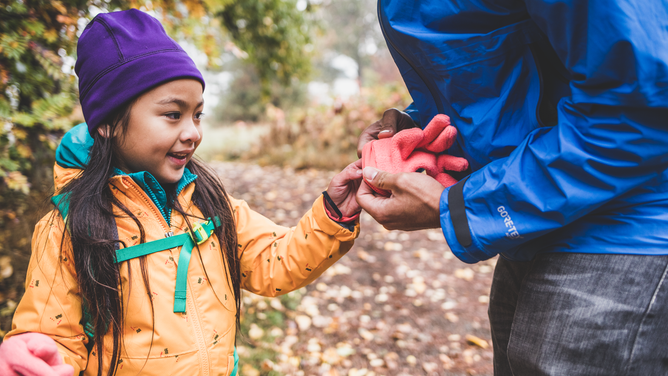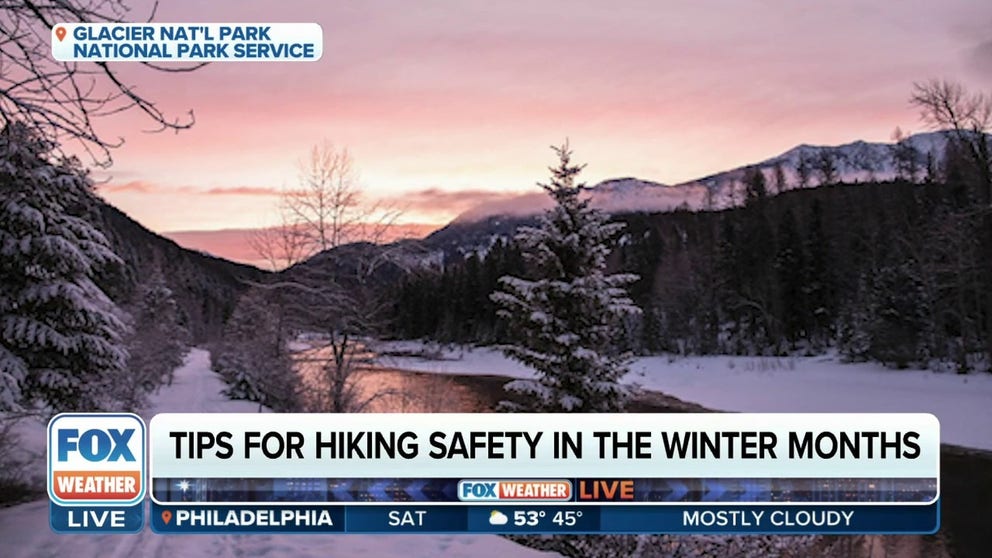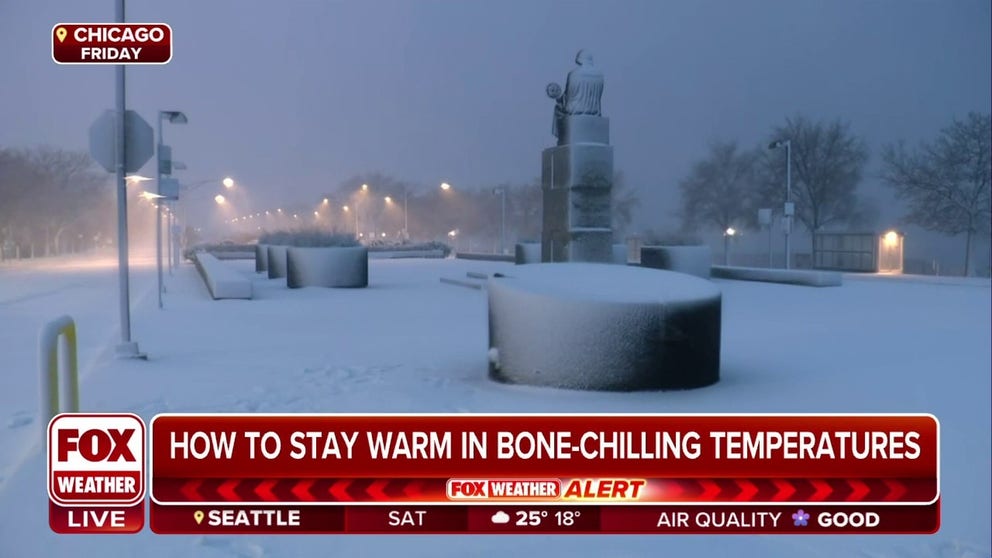How to dress warmly for winter weather adventures
Dressing strategically for colder temperatures has to do with managing heat and moisture.
FILE: Tips for hiking safety in the winter months
Gina Icenoggle, public information officer for Glacier National Park, provides tips on how hikers, skiers and other adventurers can safely enjoy the outdoors in winter. Dec. 8, 2023.
There is no need to shy away from the outdoors as the temperatures drop as long as you know how to dress for the cold weather.
"This is a great time of year to be outside and hiking," said Paul Smith, lead guide with REI Experiences.
He noted how cooler seasons give hikers an opportunity to see their favorite walk in a new light. For example, with fewer leaves on the trees, hikers can see farther and see the shape of the land.
Plus, when snow falls, hikers can go into the woods and find and follow animal tracks. The snow also muffles sounds, so hikers are able to hear and experience nature differently.
WHY IS IT QUIETER AFTER A SNOWSTORM?
Another perk of hiking during this time of year is that it is easier to dress and be more comfortable for the outdoors.
The importance of dressing with strategy

A man hikes a snowy mountain.
(Piotr Bajbak / Unsplash / FOX Weather)
To stay comfortable in cooler temperatures – and to avoid becoming sick and having to cut your trip short – a few considerations need to be made when getting dressed beyond simply throwing on a thick coat.
Dressing strategically for colder temperatures largely involves managing heat and moisture, according to Smith.
Heat is naturally produced by your body, and wearing appropriate clothing to retain that heat is critical. However, retaining too much heat, especially as you exert yourself during your hike and generate more heat, can become a problem. Taking off too many clothes can be dangerous as you become more exposed to the cold.
WHAT DOES FROSTBITE DO TO YOUR BODY? HERE ARE THE GORY DETAILS
Too much heat can lead to moisture, or sweat, building up and causing your skin to feel wet and clammy. Smith said this happens when wearing clothes that are too thick and insulating or that can trap moisture in your clothes. When that sweat absorbs into your clothes and does not dry, that can lead you to feel cold.
How to dress in layers

A woman, bundled up for winter weather.
(Jasmine Coro / Unsplash / FOX Weather)
The key to managing heat and moisture involves dressing in layers, according to Smith. Layers offer not only comfort but also flexibility and give adventurers a chance to fine-tune their winter wear as they generate heat and sweat during their hikes.
Here is how to properly layer clothes for cold weather adventures.
- A base layer - The layer closest to the skin is called the base layer. The purpose of a base layer is to move moisture off of the skin and out onto surrounding layers, Smith said. He recommended base layers made of wool or a synthetic material, which can effectively wick sweat and keep skin dry. He advised against using base layers made of cotton, as cotton absorbs moisture and becomes damp next to your skin.
- A middle layer - The middle layer lies on top of the base layer. This layer serves as insulation, helping retain the body heat you produce. A middle layer can be a long-sleeved zip-up, a vest, a fleece or even a puffy jacket. Smith said that when he hikes, he prefers to use two lighter middle layers on top of each other.
- An outer layer - This layer rests on top of the middle layer. According to Smith, an outer layer serves as a shield to protect you from rain, snow or wind. It could be as light as a wind shell made of a nylon synthetic that helps ward off the gusty chill, or it could be thicker and capable of protecting you from snow and ice.

A woman smiles with the sun low on the horizon.
(REI Co-op / FOX Weather)
Each layer can be removed or put back on as heat and sweat are generated by your body throughout a hike.
To help make bringing along layers more convenient on a hike, Smith recommends wearing a small backpack where clothing can be stored while keeping your hands free during your hike.
Keeping your hands, feet and head warm

A child puts her glove on with help.
(REI Co-op / FOX Weather)
In addition to managing the heat and moisture of your body, wearing the right layers can also impact how warm your hands, feet and head may feel.
- Neck gaiter - A neck gaiter is a convenient and effective way to protect and warm your neck. It is smaller and uses less fabric than a traditional scarf, but it can block the cold and wind just as well. Because of its smaller size, it can also be easily stowed away in a pocket, Smith said.
- Hat - Keeping your head warm is critical. An insulating layer, such as a stocking cap, may be enough, while another layer may be necessary, depending on the weather. For example, during blustery conditions, Smith advises wearing a stocking cap with a wind barrier built in or placing an outer layer, such as the hood of a jacket, on top of the cap that can block out the wind.
- Gloves - Depending on the outdoor activity, Smith recommends wearing a thinner pair of gloves that aren’t too tight along with a thicker pair of gloves on top of the thinner layer. Much like the layering strategy of using a base layer, middle layer and outer layer, wearing multiple layers of gloves provides control on how to keep your hands warm and dry.
- Socks and shoes - When hiking in cold weather, it is important to wear insulating sock layers. However, Smith noted that one common mistake adventurers make is wearing too many layers for the size of their shoewear. The fit of the shoe becomes too tight, squeezing the feet so much that warm blood is unable to flow in and causes the feet to become cold. To combat this, he recommends wearing larger footwear in the winter time.
How to stay warm in bone-chilling temperatures
Dr. Sampson Davis, Emergency Medicine Physician at CareWell in East Orange, New Jersey, explains how people can take precautions against frostbite and the four stages of frostbite to look out for. Jan. 13, 2025.

